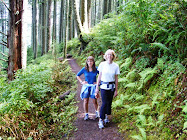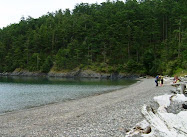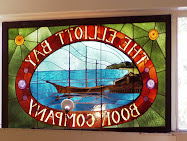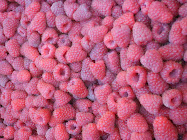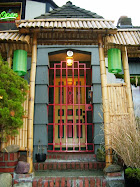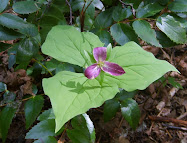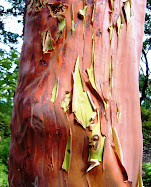
I love it when traveling with a loose agenda brings serendipitous surprises. Have you been so lucky too?
It doesn’t always happen of course. But when it does, stumbling upon a beautiful place you didn’t know existed is like an unexpected birthday present—regardless of whether it’s your birthday.
Today we’re in for such a gift. After lunch in Clarkston, Washington, we’re headed south on State Route 129, rolling past dry grassland scattered with clumps of ponderosa pine and golden larch forests. We’ve climbed up to over 3,000 feet in elevation here, back into the western larch zone. This area on the flank of the ancient Grande Ronde volcano is still one of the higher parts of the Columbia Plateau.
About 30 miles south of Clarkston, we pass through the metropolis of Anatone, one of those “if you blink you miss it” towns.

Just a bit south of town, we see a sign for Field Springs State Park. “Hey, let’s see if they have a bathroom we can use,” I say. So we pull in and drive through the forest up to a restroom that’s fortunately open in the off-season.
While I’m waiting for Rich, I wander over to a trailhead sign at the edge of the parking lot. It’s a mile to Puffer Butte—just long enough to stretch our legs before hopping back in the car.
As we’re ascending through the mixed forest of pine,small maples, and dry grasses on the narrow trail, rain starts falling gently. Several times we reach junctions where other trails criss-cross. These are cross-country ski trails during the winter.

The trailhead sign warned of bear and cougar, and about a half mile up the trail we come upon some sizable scat in the middle of a big scratch mark in the trail. Cougar? I fear big cats more than bears when I’m out hiking.
After about half an hour of hiking, we top out at a dirt road and walk about a hundred yards to the edge of the forest, where we find a locked up ski warming hut. (I want to come back and cross-country ski here in the fast-approaching winter.)

And then our jaws drop.

Spread below us is a magnificent panorama of arid canyons and mountains partially veiled in clouds. The sense of scale reminds me of the Grand Canyon, except with more curvaceous landforms. Being the only ones here heightens the magic of this place, this view, this splendor.

We’re close to the Idaho border; to the south are the snow-covered Wallowa Mountains in Oregon, although they are mostly obscured by clouds today.

For about half an hour we wander down the scrubby slope, taking lots of pictures, thinking we’ll drop to the smaller rise below. The farther we go, though, the more we realize it’s farther than we thought.


Our short hike extends to a couple hours, but by mid-afternoon we continue south on 129 as it switchbacks down dramatically into the Grande Ronde Canyon. This stretch of highway is also called the Rattlesnake Grade.
“Wow! This road reminds me of something you’d see as a stage on the Tour de France!” says Rich, who regards hills and slopes in terms of how fun they would be to ski or bicycle.

I wish I could bottle the quiet out here and immerse myself in it during the often stressful life I lead in the city. Each time we stop to take pictures (at my insistence), I make a point to stand still and listen for a few minutes. The silence, broken only by the breeze rustling through the grass and a single car far off down canyon, is like a soothing balm.
We dip down and out of the canyon back onto the plateau, skirting past Joseph Canyon (now we’re in Oregon) on our left, where the Wallowa Nez Perce (Nimiipuu) Indians spent winters before being forced onto reservations by the Union Army in the latter nineteenth century.
And then its on to Joseph, Oregon, tonight. Lucky for us the snow-dusted Wallowas provide a beautiful backdrop for the later afternoon drive. Really lucky, as it turns out, because of the weather we’re in for tomorrow…

When You Go
Click here for some photos and maps of the stretch of Highway 129 (in Washington) and Highway 3 (in Oregon) that we drove.






















































